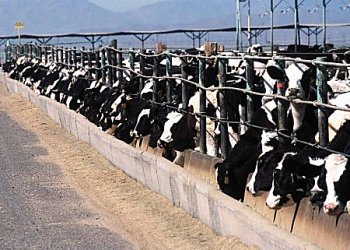Agriculture in its best form is essential for life as we are accustomed to, but industrial agriculture is a different beast entirely. The difference between the two is more than just scale — there are many factors aside from its larger size that make industrial agriculture bad for the environment.
Monoculture
One of the biggest faults of industrial agriculture is a practice called monoculture, which means growing the same crop(s) repeatedly in the same patch of soil. While it is good for profits, monoculture is damaging for the soil and leads to both nutrient depletion and erosion. Corn is a good example of a crop often grown this way. The depleted soil isn’t left alone–synthetic fertilizers are used to continue to give the crops the nutrition that they need. The plants get what they need in the end, but the soil is still tired and drained. The opposite of this unsustainable practice is crop rotation, in which crops are rotated over the years to allow the soil to replenish itself. Each crop has its own nutritional needs from the soil, and some plants can put nutrients like nitrogen back into the soil.
Cover Crops
To make matters worse, these big farms engage in another faulty practice–they don’t use cover crops. What that means is that in the off-season of whatever crop is being grown, the soil is left barren. This doesn’t help the soil replenish itself though, it just leaves is open to erosion by wind and rain, the end result of which is excess fertilizers being carried off into the nearest body of water — like the Maumee River or Lake Erie. Using cover crops can help prevent the loss of nutrients and water, and as an added bonus can also provide grazing for farm animals, further adding to the farm ecosystem as a whole.
Confined Animal Feeding Operations (CAFOs)
Another devastating result of industrial agriculture is waste products from Confined Animal Feeding Operations (CAFOs), which in addition to being horribly abusive to the animals produces a concentrated waste from the animals that is not useful to farmers as manure. This waste matter is still of use to cyanobacteria though, so when it washes into a body of water they benefit and we suffer.
Effects of agriculture:
Vineyards are common in New York, Pennsylvania, and L.E.N.S. and Pelee Island in Canada, with some runoff entering the lake. Other forms of agriculture in Ohio, Michigan and Ontario (CA) also have runoff entering the lake. The Maumee river transports only 5% of the lake’s water, but 50% of Phosphorus; largely in part due to the agriculture of the surrounding areas.[5]
Also see: Industrial Agriculture, Union of Concerned Scientists (outside link)


